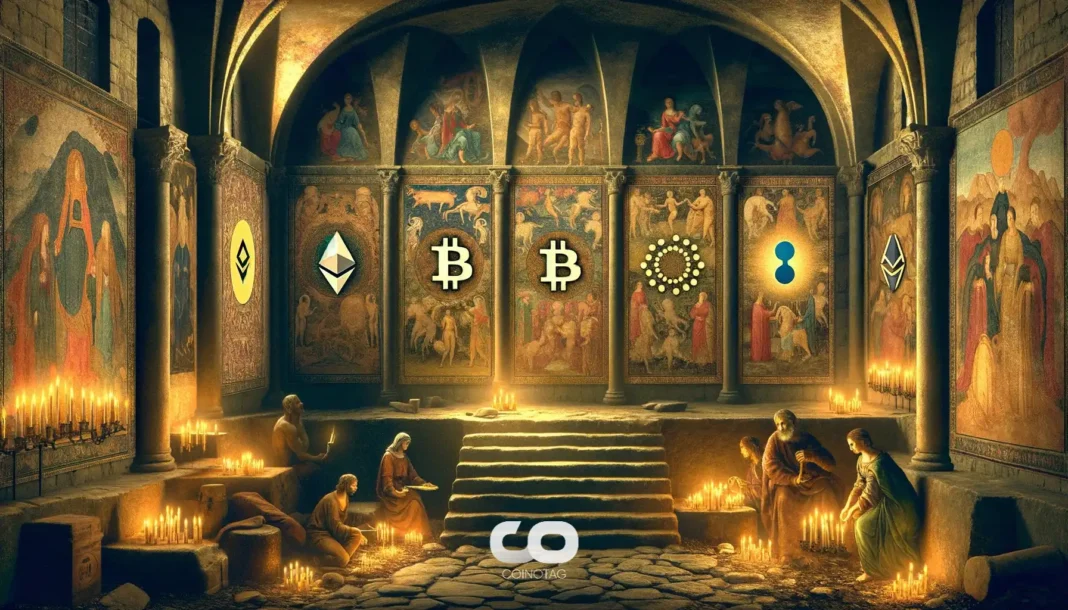| COINOTAG recommends • Exchange signup |
| 💹 Trade with pro tools |
| Fast execution, robust charts, clean risk controls. |
| 👉 Open account → |
| COINOTAG recommends • Exchange signup |
| 🚀 Smooth orders, clear control |
| Advanced order types and market depth in one view. |
| 👉 Create account → |
| COINOTAG recommends • Exchange signup |
| 📈 Clarity in volatile markets |
| Plan entries & exits, manage positions with discipline. |
| 👉 Sign up → |
| COINOTAG recommends • Exchange signup |
| ⚡ Speed, depth, reliability |
| Execute confidently when timing matters. |
| 👉 Open account → |
| COINOTAG recommends • Exchange signup |
| 🧭 A focused workflow for traders |
| Alerts, watchlists, and a repeatable process. |
| 👉 Get started → |
| COINOTAG recommends • Exchange signup |
| ✅ Data‑driven decisions |
| Focus on process—not noise. |
| 👉 Sign up → |
-
The GMX decentralized exchange (DEX) has initiated the recovery of $40 million stolen in a recent exploit, as the attacker begins returning funds after accepting a $5 million white hat bounty.
-
The hacker exploited a design vulnerability in GMX v1’s liquidity pool, manipulating GLP token values to drain assets, but has now committed to returning approximately half of the stolen crypto.
-
According to blockchain security firm PeckShield, the attacker’s onchain message confirmed the return of funds, marking a rare instance of partial restitution following a major DeFi hack.
GMX DEX hacker returns $20M of stolen $40M after accepting a $5M white hat bounty, highlighting evolving security and bounty strategies in DeFi exploits.
GMX Exploit Recovery: Attacker Returns $20 Million in Crypto
The recent attack on GMX v1, a decentralized perpetual trading platform on Arbitrum, exposed a critical design flaw in its liquidity pool, enabling the hacker to manipulate GLP token valuations and extract $40 million in various crypto assets. However, the situation took a positive turn when the attacker issued an onchain message pledging to return the stolen funds.
Within an hour of the message, the hacker began transferring assets back to the addresses specified by the GMX team. Notably, approximately $9 million in Ether (ETH) and $10.5 million in FRAX stablecoins have been returned, totaling around $20 million recovered to date. This partial restitution demonstrates a strategic acceptance of the white hat bounty and a willingness to cooperate, which is uncommon in large-scale DeFi breaches.
White Hat Bounty Incentivizes Fund Return and Mitigates Legal Risks
GMX’s decision to offer a $5 million white hat bounty played a pivotal role in encouraging the hacker to return the stolen assets. Publicly acknowledging the attacker’s technical prowess via social media, the GMX team framed the bounty as a reward for ethical behavior, allowing the hacker to retain a portion of the funds legally.
| COINOTAG recommends • Professional traders group |
| 💎 Join a professional trading community |
| Work with senior traders, research‑backed setups, and risk‑first frameworks. |
| 👉 Join the group → |
| COINOTAG recommends • Professional traders group |
| 📊 Transparent performance, real process |
| Spot strategies with documented months of triple‑digit runs during strong trends; futures plans use defined R:R and sizing. |
| 👉 Get access → |
| COINOTAG recommends • Professional traders group |
| 🧭 Research → Plan → Execute |
| Daily levels, watchlists, and post‑trade reviews to build consistency. |
| 👉 Join now → |
| COINOTAG recommends • Professional traders group |
| 🛡️ Risk comes first |
| Sizing methods, invalidation rules, and R‑multiples baked into every plan. |
| 👉 Start today → |
| COINOTAG recommends • Professional traders group |
| 🧠 Learn the “why” behind each trade |
| Live breakdowns, playbooks, and framework‑first education. |
| 👉 Join the group → |
| COINOTAG recommends • Professional traders group |
| 🚀 Insider • APEX • INNER CIRCLE |
| Choose the depth you need—tools, coaching, and member rooms. |
| 👉 Explore tiers → |
The bounty offer included assurances such as proof of the source of funds to facilitate safe spending by the hacker, alongside a clear legal warning: failure to return 90% of the stolen crypto within 48 hours would prompt legal action. This dual approach of incentive and deterrence reflects an evolving security paradigm within DeFi, balancing negotiation with enforcement to protect platform integrity.
Implications for DeFi Security and Future Exploit Responses
The GMX incident underscores the persistent vulnerabilities in decentralized finance protocols, particularly those involving complex tokenomics and liquidity pools. The exploit leveraged a subtle design flaw, emphasizing the need for rigorous security audits and continuous protocol improvements.
| COINOTAG recommends • Exchange signup |
| 📈 Clear interface, precise orders |
| Sharp entries & exits with actionable alerts. |
| 👉 Create free account → |
| COINOTAG recommends • Exchange signup |
| 🧠 Smarter tools. Better decisions. |
| Depth analytics and risk features in one view. |
| 👉 Sign up → |
| COINOTAG recommends • Exchange signup |
| 🎯 Take control of entries & exits |
| Set alerts, define stops, execute consistently. |
| 👉 Open account → |
| COINOTAG recommends • Exchange signup |
| 🛠️ From idea to execution |
| Turn setups into plans with practical order types. |
| 👉 Join now → |
| COINOTAG recommends • Exchange signup |
| 📋 Trade your plan |
| Watchlists and routing that support focus. |
| 👉 Get started → |
| COINOTAG recommends • Exchange signup |
| 📊 Precision without the noise |
| Data‑first workflows for active traders. |
| 👉 Sign up → |
Moreover, the partial recovery of funds through a white hat bounty signals a potential shift in how DeFi platforms respond to hacks. By offering structured incentives and legal frameworks, projects may increase the likelihood of fund restitution, reducing losses for users and maintaining trust in decentralized ecosystems.
Community and Industry Reactions to the GMX Exploit
Industry experts and blockchain security firms like PeckShield have highlighted the importance of transparent communication and swift action in mitigating the fallout from such exploits. The GMX team’s proactive stance and public updates have been praised for setting a precedent in crisis management within the crypto space.
| COINOTAG recommends • Traders club |
| ⚡ Futures with discipline |
| Defined R:R, pre‑set invalidation, execution checklists. |
| 👉 Join the club → |
| COINOTAG recommends • Traders club |
| 🎯 Spot strategies that compound |
| Momentum & accumulation frameworks managed with clear risk. |
| 👉 Get access → |
| COINOTAG recommends • Traders club |
| 🏛️ APEX tier for serious traders |
| Deep dives, analyst Q&A, and accountability sprints. |
| 👉 Explore APEX → |
| COINOTAG recommends • Traders club |
| 📈 Real‑time market structure |
| Key levels, liquidity zones, and actionable context. |
| 👉 Join now → |
| COINOTAG recommends • Traders club |
| 🔔 Smart alerts, not noise |
| Context‑rich notifications tied to plans and risk—never hype. |
| 👉 Get access → |
| COINOTAG recommends • Traders club |
| 🤝 Peer review & coaching |
| Hands‑on feedback that sharpens execution and risk control. |
| 👉 Join the club → |
Meanwhile, the broader DeFi community is closely monitoring the situation, recognizing the delicate balance between incentivizing ethical behavior and deterring malicious actors. This case may influence future policies on bug bounties and exploit negotiations across the sector.
Conclusion
The GMX hack and subsequent partial recovery illustrate the complexities of securing decentralized platforms amid sophisticated attacks. The acceptance of a $5 million white hat bounty by the attacker and the return of $20 million in stolen assets highlight a pragmatic approach to exploit resolution that benefits both the platform and its users. Moving forward, DeFi projects must continue enhancing security measures and developing robust incentive structures to safeguard assets and maintain ecosystem confidence.
| COINOTAG recommends • Members‑only research |
| 📌 Curated setups, clearly explained |
| Entry, invalidation, targets, and R:R defined before execution. |
| 👉 Get access → |
| COINOTAG recommends • Members‑only research |
| 🧠 Data‑led decision making |
| Technical + flow + context synthesized into actionable plans. |
| 👉 Join now → |
| COINOTAG recommends • Members‑only research |
| 🧱 Consistency over hype |
| Repeatable rules, realistic expectations, and a calmer mindset. |
| 👉 Get access → |
| COINOTAG recommends • Members‑only research |
| 🕒 Patience is an edge |
| Wait for confirmation and manage risk with checklists. |
| 👉 Join now → |
| COINOTAG recommends • Members‑only research |
| 💼 Professional mentorship |
| Guidance from seasoned traders and structured feedback loops. |
| 👉 Get access → |
| COINOTAG recommends • Members‑only research |
| 🧮 Track • Review • Improve |
| Documented PnL tracking and post‑mortems to accelerate learning. |
| 👉 Join now → |







